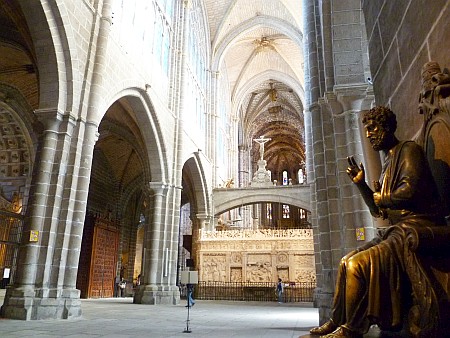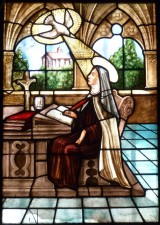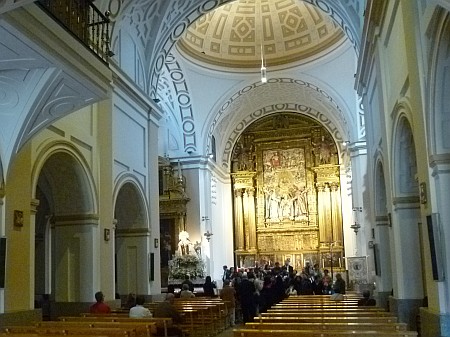 Index
Index

Ávila is a small city 68 miles (109 km) northwest of Madrid that has very well-preserved walls from medieval times. The walled city is contained within one square kilometer, but the modern part of Ávila outside the walls is ten times bigger and has approximately 58,000 inhabitants.
Inside the walls of Ávila, visitors get a realistic impression of what it was to live in a medieval city. The most notable architectural structures of Ávila are its walls and its churches.

The walled city of Ávila has a rectangular plan with four main streets running generally from east to west, although the streets are not very straight. The cathedral straddles the eastern wall because it was also part of the defensive fortification of the city.

After the fall of the Roman empire, Ávila became a stronghold of the Visigoths. The city was later conquered by the Moors. After repeated attacks by Christian forces, the city was finally retaken in 1088. The construction of the walls started in 1090.

The walls of Ávila have 9 gates and an average height of 12 meters (39 feet). The streets inside the walls are narrow and only local vehicles are allowed. If you travel by car, you will need to leave it at one of the three parking areas outside the walls and walk.

Construction of the Ávila cathedral started in 1091 with a dual purpose. Besides being a place of worship, the cathedral was designed as a fortress to defend the eastern wall with battlements, machicolations and sentry walks that combine harmoniously with the structure of one of the first Gothic temples in Spain. The cathedral now serves also as a museum that houses important Spanish art.


The cathedral museum has medieval paintings, rich ritual vestments embroidered in gold and silver, as well as religious objects like crucifixes and chalices of various designs.


Ávila is also known as the birthplace of Saint Theresa whose birth name was Teresa de Cepeda y Ahumada. Theresa's grandfather was a Jew who had converted to Christianity. Theresa's mother raised her as a pious Christian to avoid the persecution of the Spanish Inquisition which had accused her grandfather of returning to the Jewish faith. Saint Theresa is considered to be a founder of the Discalced Carmelites. A convent was built on the land that was occupied by the house where Saint Theresa was born. The construction of the convent lasted from 1629 to 1636.


The shrine of the Four Posts is a popular stop for tour buses because it has a spectacular view of Ávila. From this spot it is possible to see the whole west wall of the city.